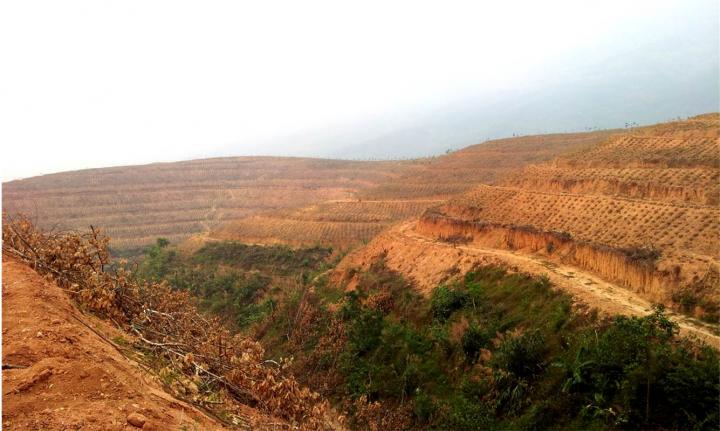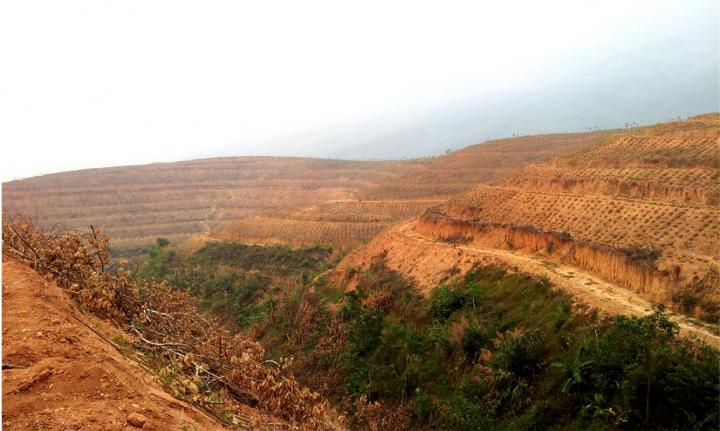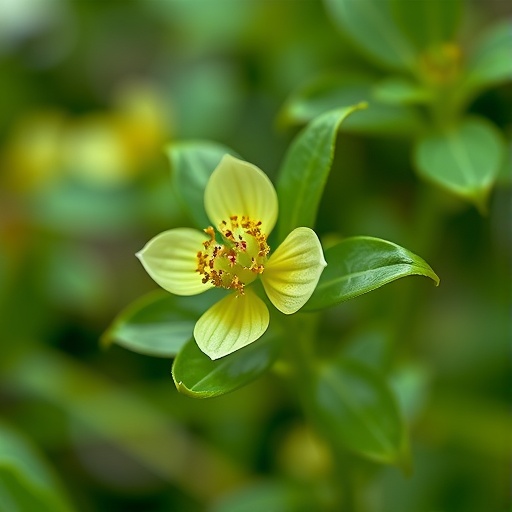
Credit: Fritz Wobig
China has invested more resources than any other country in reversing deforestation and planting trees. However, given the large scale of these programmes it has been difficult to quantify their impact on forest cover. A new study shows that much of China's new tree cover consists of sparse, low plantations as opposed to large areas of dense, high tree cover. The results of the study could help policymakers track returns from tree-planting investment and identify suitable environments for future afforestation, aiding efforts to sequester carbon, prevent soil degradation and enhance biodiversity.
Since devastating floods in 1998 highlighted the dangers of deforestation, China has enacted strict bans on logging in primary forests, a massive expansion of forest reserves, and multibillion-dollar afforestation programmes. "This approach has undoubtedly had a major impact on reducing loss of trees in China" said Antje Ahrends of the Royal Botanic Garden Edinburgh (RBGE) and Kunming Institute of Botany (KIB), and lead author of the study. "China has spent more than US$ 100 billion on planting trees over the last decade alone. However, despite the many successes of this programme, planting trees is not the same as gaining forests."
In China's fight to halt tree cover loss, Ahrends and her colleagues analysed high-resolution maps derived from satellite data using different definitions of "forest". Under the broadest definition, that used by the UN Food and Agriculture Organisation (FAO), China gained 434 000 km² of forest cover between 2000 and 2010 – larger than the areas of Germany, The Netherlands, Belgium and Luxembourg combined. However, this definition includes scattered, immature or stunted plantations often consisting of a single species or even single clones, which are unlikely to provide the same benefits as large areas of dense and tall forest. The paper, co-authored by a team from organisations including RBGE, KIB and the World Agroforestry Centre (ICRAF), will be published online today in the Proceedings of the Royal Society B.
"We wanted to see how this picture would change if we specifically looked for large areas of tall, relatively dense tree cover" said co-author Xu Jianchu of the World Agroforestry Centre and KIB. "Understanding the type of cover established by afforestation programmes is critical to understanding the impacts of these projects on soil health, biodiversity and carbon sequestration." The results were dramatically different: under the stricter definition, China's forests expanded by less than a tenth of the previous estimates – 33 000km², an area smaller than the size of The Netherlands.
The study also notes the practical challenges facing tree planting programmes in China: China has to feed one-fifth of the global population on less than one-tenth of the world's agriculturally suitable land, and its growing economy means land suitable for growing trees is increasingly in demand for food production, construction and industrial use.
"Our analysis illustrates the importance of both definitions and large-scale monitoring for understanding changes in tree cover" said co-author Peter Hollingsworth of RBGE. "It provides enhanced understanding of where tree planting programmes are most successful, and whether those programmes are leading to dense forests or sparsely spaced shrubs."
The report also looks at global trends: the researchers found that roughly half of the world's forest cover has been lost over the past 10,000 years, and that tree cover is being lost in low-income countries at the rate of around 25 000km² per year. However, the researchers also found evidence that many countries which have in the past lost much of their forests may be shifting to protect their remaining tree cover.
###
Ahrends A, Hollingsworth PM, Beckschäfer P, Chen H, Zomer RJ, Zhang L, 14 Wang M, Xu J. 2017. China's fight to halt tree cover loss. Proc. R. Soc. B 20162559.
Participating Institutions
Kunming Institute of Botany (KIB): KIB is a leading research institute which is affiliated to the Chinese Academy of Sciences (CAS) and dedicated to research in the fields of Botany and Phytochemistry. KIB is committed to exploring the world of plants, to generating knowledge about them and to developing sustainable ways to use plant resources.
Royal Botanic Garden Edinburgh (RBGE) – Founded in 1670, RBGE is a world-renowned centre for plant science, horticulture and education. RBGE extends over four sites, and is the second richest collection of plant species in the world. Our mission is to explore, conserve and explain the world of plants for a better future.
World Agroforestry Centre (ICRAF) – ICRAF is a centre of scientific excellence with the world's largest repository of agroforestry science, information and expertise. We contribute to providing solutions to the major challenges of our day, such as climate change; environmental degradation, poverty, demographic upheavals and conflict whilst securing equitable futures for all. We reach impact at scale through a combination of the science of discovery and the science of delivery ensuring policy makers can harness evidence to inform policy for sustainable and adaptive responses.
University of Göttingen – Established in the age of the Enlightenment (1737) and committed to its critical spirit, the University of Göttingen has to this day been characterised by scholarly pragmatism and a sense of reality as well as keen awareness for science's societal responsibility. The University of Göttingen is an internationally renowned university placing emphasis on research and research-based teaching.
Chinese Academy of Agricultural Sciences (CAAS) – CAAS is a national agricultural research organization dedicated to overcoming a broad range of challenges impacting agricultural development and support of the local rural economy. CAAS promotes sustainable agriculture within and outside China, extending its reach through technology exchange and cooperative research agreements with agricultural research institutions both domestically and internationally.
Media Contact
Antje Ahrends
[email protected]
@ICRAF
http://www.worldagroforestry.org/
############
Story Source: Materials provided by Scienmag





